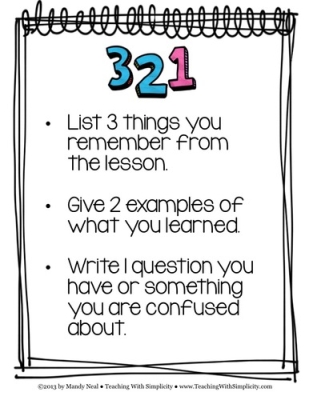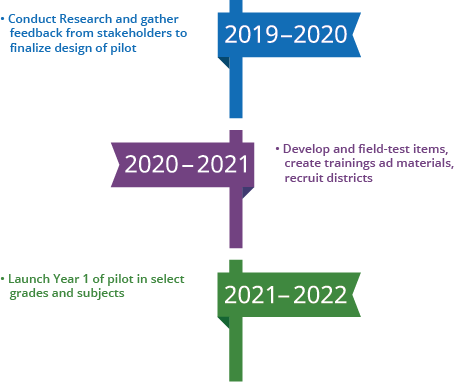Formative assessment is known as ‘assessment for learning'. It is consists of informal assessment methods, usually devised by the teacher or trainer, to check learning is happening during the teaching session. It is designed to generate feedback on progress and ultimately is a way to check that learners are ready for their summative assessment. Formative assessment is known as ‘assessment for learning'. It is consists of informal assessment methods, usually devised by the teacher or trainer, to check learning is happening during the teaching session. It is designed to generate feedback on progress and ultimately is a way to check that learners are ready for their summative assessment.
- Common Formative Assessment
- Formative Assessment Examples Social Studies
- Formative Assessment.com
- Formative Assessment Components
- Good Formative Assessment
The Formative Assessment video is a resource that can be used to support educators' professional development related to assessment literacy. Use the Video Supplement & Resource Guide to enhance your facilitation of this professional development opportunity.
How are students doing? Are they picking up the information they should be learning? Teachers who don’t want to wait until the end of a unit or semester use various tactics, like formative assessment, to “check in” with students and see how they are progressing.
What makes formative assessment stand out?
Formative assessment involves the use of immediate insights to guide instruction. If we break down the term, we see that “Formative” comes from Latin formare ‘to form.’ Assessment simply refers to an evaluation. Together the words “formative” and “assessment” refer to a guiding evaluation that helps to shape something. With formative assessment, teachers mold or form instruction to better suit student learning. To glean actionable insights, the best formative assessments are generally easy to implement and offer immediate results that lead to instant intervention or instructional adjustments.
Formative assessment is a low-stakes, quick way to check in with students. Photo by US Department of Education.
Common Formative Assessment
Here’s how education academics Paul Black and Dylan William explain the differences between formative assessment and the general term “assessment”:
We use the general term assessment to refer to all those activities undertaken by teachers — and by their students in assessing themselves — that provide information to be used as feedback to modify teaching and learning activities. Such assessment becomes formative assessment when the evidence is actually used to adapt the teaching to meet student needs.
Black, P. & Wiliam, D. 1998. Inside the Black Box: Raising standards through classroom assessment, King’s College, London
Another Way to Check-up on Everyone
Formative Assessment Examples Social Studies
One common way to think of a formative assessment is to think about “check-ups” with the doctor. During a check-up, the doctor assesses the status of your health to make sure you are on track and to identify any areas where you might need more attention or support. It can be used to promote healthy habits or catch symptoms of illness. If the doctor notices something amiss, they may ask you to exercise more or eat less sugar and more vegetables! The goal is to make strategic changes based on new insights. Similarly, formative assessment provides feedback to teachers, allowing them to “check-in” on how students are doing, or, to match this analogy, the “health” of learning!
Components that Define Formative Assessment
The main intent of formative assessment is to gather insight about student learning during a unit to track student progress and inform instruction.
Formative assessments usually comprise of the following key aspects
- Low-stakes assessment
- Goal of informing instruction
- Gain insight on learning status
- Helps identify knowledge retention and understanding
- Daily, weekly, or otherwise frequent checks
- Generally short and quick checks
- Comes in many forms: quiz, exit ticket, artwork, venn diagram, game, presentation, etc.
Examples of Formative Assessment
Formative assessments could include benchmark tests, a class discussion, an “exit ticket” activity or any check-in the teacher conducts to see how much has been learned. By taking a quick formative assessment, the teacher can see how much has been retained and then modify the upcoming lessons or activities to fill in the gaps or pick up the pace. It allows, as the name suggests, a teacher to form or reshape the lessons as they go. Formative assessments can sometimes be called interim assessments.
As you might be able to tell, formative assessments come in many shapes and sizes. They are used by a teacher to assess, or diagnose, how much information has been learned at periodic times in the middle of a unit, subject or year. Formative assessments are the close cousin to diagnostic assessments (add link).
Formative assessments are used in the middle of a learning process to determine if students are maintaining the right pace.
Whether teaching about long division or astronauts, formative assessment will help you discover who understands the concepts and who is spacing out. Picture by Laurie Sullivan.
Keep In Mind
The second trend driving formative assessments is the common-core style of standardized tests. Many schools are using formative tests to help guide the preparation of their students for the formal spring testing season– a time when results have an important impact on the school, district, and even the state. These kind of high-stakes assessments, such as PARCC, SBAC, AIR, ACT Aspire, etc., are driving the need for formative assessments throughout the year.
Formative Assessment.com

Like diagnostic assessments, formative assessments are usually given “cold”, without prior access to the information, to get an accurate sample of what has been retained. Similarly, they most often carry little weight towards the student’s final grade.
Online Formative Assessment with Edulastic
Many teachers use online digital assessment to gain immediate insights into student progress so they can immediately adjust teaching strategies or intervene where needed. Online assessment autogrades so ultimately teachers are able to save time and spend more time focusing on strong and effective instruction.
Log onto Edulastic to access a wide number of online digital assessments in the public assessment library. You may notice that a significant portion of digital assessments in the library are dedicated to helping students prepare for spring testing. Many Edulastic Certifiedassessments are modeled after the tech-enhanced style of questions that are found on the spring assessments. Using these throughout the year helps students build a comfort level with tech-enhanced maneuvers that are key to success on spring tests.
Get inspired! Try out some online formative assessments created by teachers across the country. Assign them to your students or log in to Edulastic to create a free account and start making your own!
Punnett Square Formative Assessment V1 – Preview / Access
Greek/Latin Roots Quiz – Preview / Access
Logarithmic Functions – Preview / Access
Alg 1B Quiz #25 – 8.3/4 Multiplying Polynomials – Preview / Access
Edulastic for the first time today. Formative about factors and multiples. #GrowthMindsetpic.twitter.com/gPVXd9QbSw

— Lindsay Johnson (@ljjohnson82) January 13, 2017
Our 4th grade team is building a formative assessment in @edulastic to help kids with comp… https://t.co/dsdC0IYztXpic.twitter.com/GYgOJk6cLy
— Central Elementary (@CentralCabotpK4) January 18, 2017
Want to learn more?
- Learn how to bring formative assessments online with Edulastic from these past webinars.
- Discover best practices for creating assessments.
- We tallied up data from thousands of Edulastic users to see how many questions to include in a given assessment.
Why Use Formative Assessment?
ACHL’s Formative Assessment platform is an innovative, flexible platform specially designed for both continuing professional education and internal corporate training.
How It Works:
- Learners begin by completing a baseline assessment of their knowledge, including a pre-activity confidence assessment surrounding content covered in the activity.
- A custom bar graph depicting learners’ baseline assessment results appears. Participants can instantly visualize their individual results compared to the average score of their peers via the Peer Comparison Scorecard.
- The Personalized Learning Roadmap appears. Learners can follow the Roadmap to reach the customized supplemental educational module(s) most relevant to their unique knowledge gaps and baseline competency level.
- Participants conclude each module with a customized post assessment.
- Users of the platform can receive:
- Multiple, competency-based “correct” answer choices that measure participants’ content/concept mastery at a granularity level rarely seen elsewhere.
- Answer rationales and evidence-based sources supporting the correct answer choices at all levels of mastery.
- Multiple customizable, specialty-specific content/question tracks, allowing multiple practice type(s)/specialties (e.g., physicians, nurses) to receive targeted content within a single activity.
- Learners’ individual test-results score compared visually against both peers and pre-assessment results scores to illustrate the activity’s knowledge and mastery impact.
- Personalized education roadmap with content “packaged” to meet the unique needs of the learner
- Option for CME/CE credit upon completion of the post-test assessment and evaluation.
- Post-activity completion, learners can continue to access targeted content, references, and additional educational resources for improved knowledge retention and real-world application over the long term.
Formative Assessment Components
What other unique features does the Formative Assessment offer learners?
Good Formative Assessment
- Proceed through content at your own pace
- Enter/exit the platform whenever/wherever they wish
- Pick up wherever they left off
- Take as many session(s) to complete the content that they choose
- Build and measure skill levels via pre- and post-activity confidence scaling
- Follow multiple customized, specialty-specific learning tracks within the same activity
